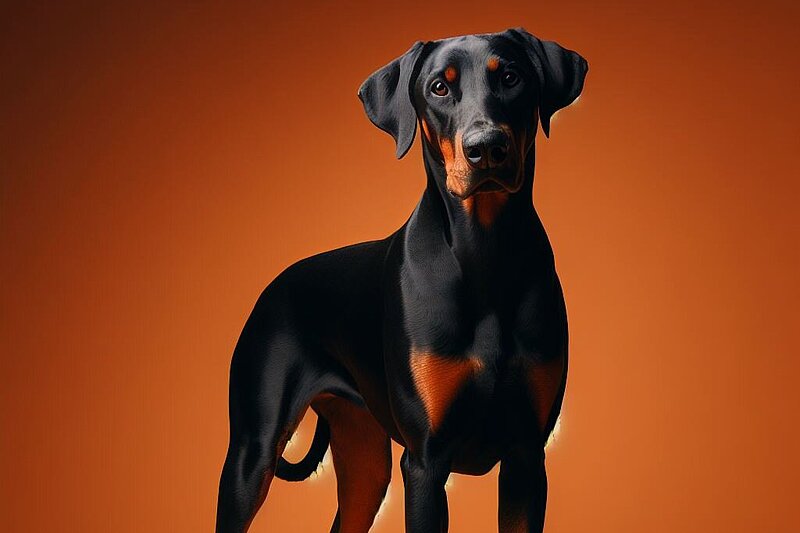The Doberman in all its facets: The elegant protector
History of the Doberman: From tax officer to guard dog
The history of the Dobermann begins in Germany in the late 19th century. The breed's namesake, Karl Friedrich Louis Dobermann, was a tax collector and night watchman. In his search for a loyal and fearless companion, he crossed various dog breeds, including the Rottweiler, Greyhound, Great Dane and Weimaraner. The result was a dog that could be both a guard dog and a companion. Since then, the Doberman has established itself worldwide as a guard and protection dog, but is also used by rescue services and the police.
Who is the Doberman suitable for?
The Doberman is not suitable for everyone. This breed requires an experienced and consistent handler who is prepared to invest a lot of time in training and socialization. Families with children, active individuals or couples and those looking for a reliable guard dog are well advised to get a Doberman. However, beginners in dog ownership should inform themselves thoroughly and possibly seek support from professional trainers.
Character: Alert, intelligent and loyal
The Doberman is known for its intelligence, alertness and loyalty. These dogs are extremely protective of their families and have a strong need to guard their territory. They are eager to learn and require mental and physical exercise. When properly socialized, Dobermans are friendly and affectionate, but they need clear leadership to develop their full potential as obedient and balanced dogs.
Appearance: strength and elegance
A Doberman is easily recognized by its lean, muscular build and aristocratic appearance. Male Dobermans reach a shoulder height of 68 to 72 cm and weigh between 40 and 45 kg, while females are 63 to 68 cm tall and weigh 32 to 35 kg. Their coat is short, smooth and close-fitting, usually black or brown with rust-colored markings.
Grooming and health: less is more
Dobermans are relatively low-maintenance when it comes to their coat. Regular brushing is enough to keep the coat healthy and shiny. The ears should be regularly checked and kept clean, as should the teeth. Due to their athletic build, Dobermans need a lot of exercise. Daily long walks and sufficient exercise are a must.
In terms of health, Dobermans are susceptible to certain hereditary diseases such as dilated cardiomyopathy (DCM) and von Willebrand's disease. Regular veterinary examinations are important in order to be able to react to health problems at an early stage.
City or country? A dog for active people
A Doberman can be kept both in the city and in the countryside, provided it gets enough exercise and mental stimulation. A house with a garden is ideal, but city life is also possible if the dog is sufficiently exercised.
Training tips: Consistency is the key
Dobermans are very intelligent dogs that learn quickly. They need consistent but loving training. Early socialization and obedience training are key to raising a balanced and obedient dog. Positive reinforcement works best with this breed. Courses in dog sports such as agility or tracking can be an excellent way to keep the dog physically and mentally active.
Behavior and interaction: A loyal family dog
Dobermans are known to bond strongly with their families. They are usually friendly towards children, but should always be supervised to ensure that play remains safe. Dobermans usually get along well with other animals if they are properly socialized. However, their protective instincts can cause them to be suspicious of strangers and animals.
Recognition and interesting facts
The Doberman is recognized by the Fédération Cynologique Internationale (FCI) as an independent breed and belongs to Group 2, Section 1: Pinschers and Schnauzers. Dobermans are known for their work in the police, military and as rescue dogs. Their versatility and loyalty make them excellent companions and working dogs.
